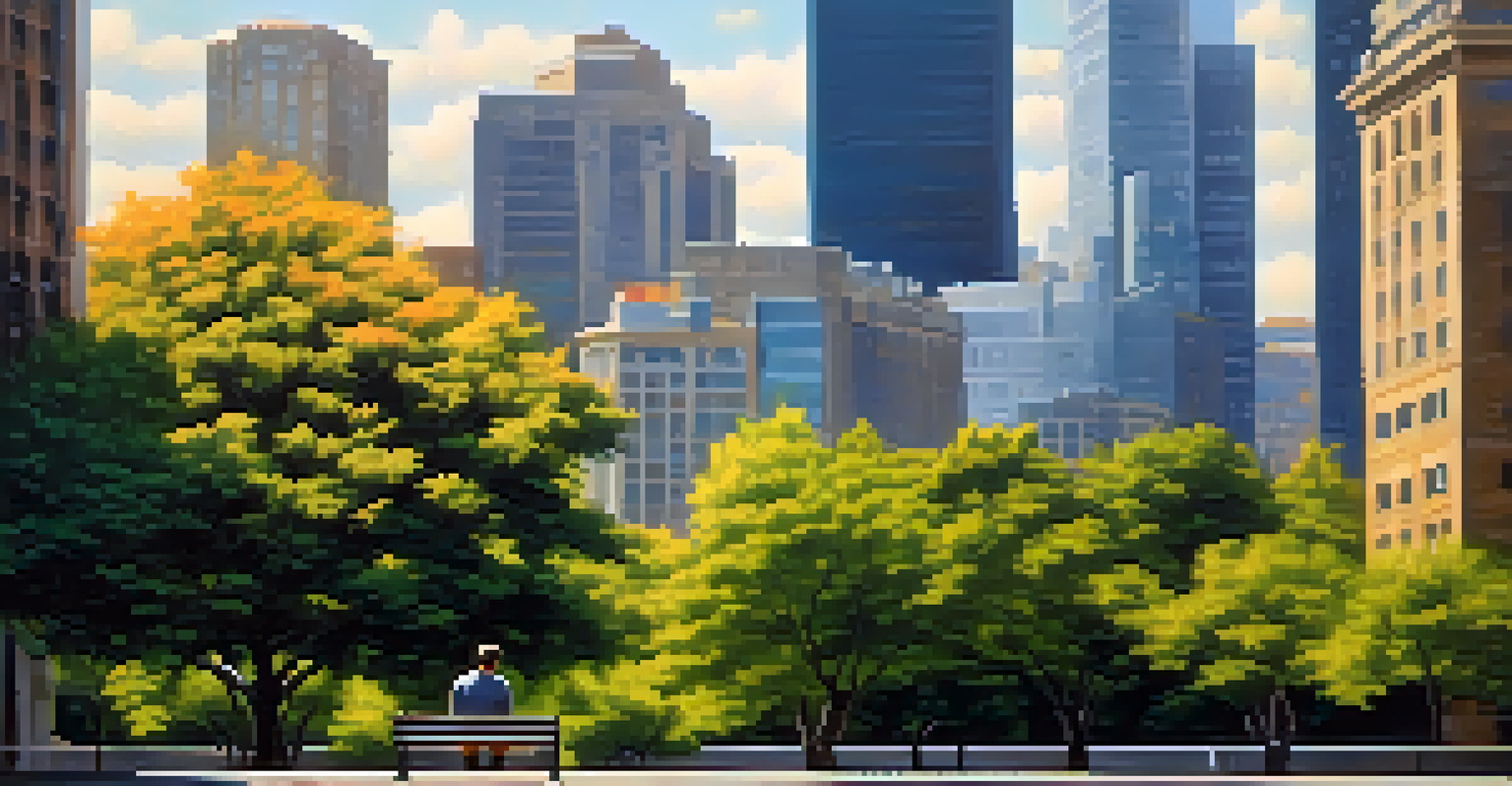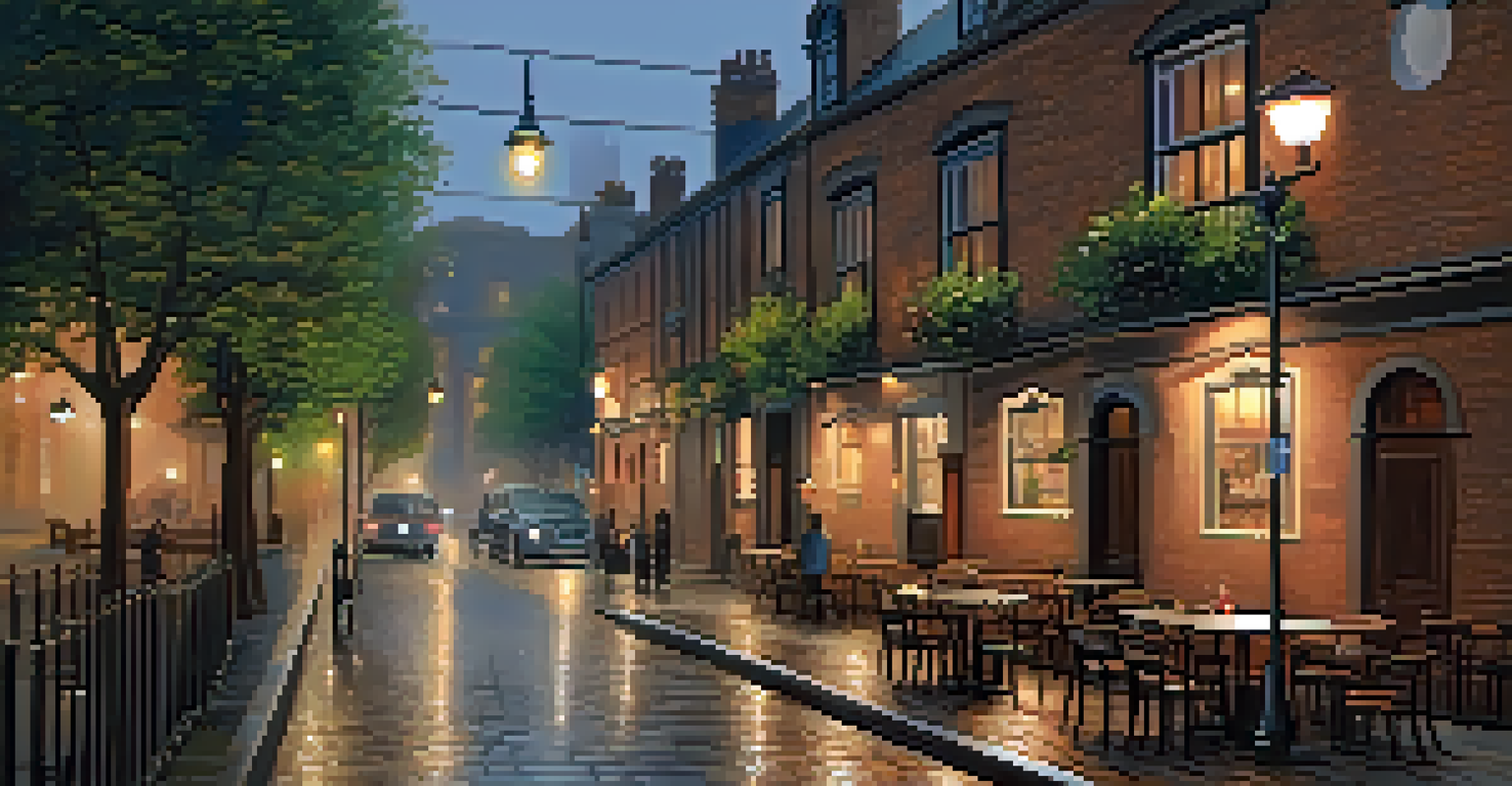Street Photography While Traveling: Capturing Urban Life

Understanding the Essence of Street Photography
Street photography is all about capturing candid moments within urban settings. It focuses on people and their interactions, reflecting the essence of life in cities. This unique art form allows photographers to tell stories through images, showcasing emotions, environments, and everyday occurrences.
Street photography is about capturing the world as it is, not as we wish it to be.
Unlike posed photography, street photography thrives on spontaneity. The beauty lies in the unpredictability of urban life, where every corner can reveal unexpected scenes. This makes it an exciting genre for travelers who want to document their adventures authentically.
When you approach street photography, think of yourself as a storyteller. Each photo can convey a narrative, whether it's joyful, somber, or thought-provoking. Embracing this mindset will help you capture the heart and soul of the places you visit.
Choosing the Right Gear for Street Photography
Selecting the right equipment can significantly enhance your street photography experience. A lightweight camera, such as a mirrorless or compact DSLR, is ideal for capturing spontaneous moments without drawing too much attention. Pair it with a versatile lens, like a 35mm or 50mm, to ensure you’re ready for various scenes.

While it’s tempting to bring all your gear, consider the importance of mobility. Too much equipment can hinder your ability to move quickly and capture fleeting moments. Stick to essentials that allow you to work efficiently in dynamic urban environments.
Embrace Spontaneity in Photography
Street photography thrives on capturing candid moments, reflecting the unpredictable beauty of urban life.
Additionally, don’t forget about accessories like extra batteries and memory cards. You never know when the perfect moment will arise, so being prepared ensures you won’t miss a shot. After all, the best stories often unfold in the most unexpected ways.
Finding the Perfect Locations for Urban Photography
When traveling, scouting locations for street photography can greatly enhance your results. Busy markets, public squares, and bustling streets often provide a wealth of opportunities for capturing life in motion. Explore neighborhoods that are vibrant and rich in culture; these areas usually yield the most compelling images.
Photography is the story I fail to put into words.
Don’t be afraid to wander off the beaten path. Sometimes, the most interesting scenes can be found in quieter alleys or local hangouts. Engaging with locals can also lead you to hidden gems that offer unique photographic opportunities.
Remember to keep an open mind and be patient. Urban life is ever-changing, and the best photos often come from unexpected situations. So, take your time, observe your surroundings, and be ready to capture the magic when it happens.
Mastering Composition in Street Photography
Composition plays a crucial role in street photography, as it can make or break your image. Familiarize yourself with the rule of thirds, leading lines, and framing techniques to create visually engaging photographs. These compositional tools can help guide the viewer’s eye and emphasize the story you want to tell.
However, don’t feel confined by strict rules. Street photography thrives on spontaneity, so sometimes breaking the rules can yield powerful results. Experimenting with angles, perspectives, and focal points can lead to unique captures that stand out.
Respect Cultural Sensitivity
Approach your subjects with empathy and awareness of cultural norms to foster meaningful interactions and images.
Ultimately, the goal is to create a connection between the viewer and the scene. A well-composed photograph should evoke emotion and curiosity, inviting the audience to explore the story behind it. Trust your instincts and let your creativity flow.
Capturing Emotion and Storytelling through Images
One of the most powerful aspects of street photography is its ability to convey emotions. Capturing genuine expressions, interactions, and moments can resonate deeply with viewers. Look for candid situations where emotions are raw and unfiltered, as these images often tell the most compelling stories.
Consider the context of your subjects and the environment around them. A person lost in thought on a busy street can evoke feelings of solitude amidst chaos. By focusing on these contrasts, you can create striking images that invite viewers to reflect on their own experiences.
Remember, storytelling in photography isn’t just about one image; it’s about creating a series that conveys a broader narrative. Think of your photos as chapters in a book, each contributing to a larger story about the place and its people.
Navigating Cultural Sensitivity in Street Photography
When photographing people in different cultures, it's essential to approach your subjects with respect and sensitivity. Understanding cultural norms and boundaries can lead to more meaningful interactions and images. Always be aware of local customs, as some communities may prefer not to be photographed.
Before taking a photo, consider asking for permission, especially in more intimate settings. This not only helps build trust but can also lead to more authentic and engaging photographs. A simple smile or a friendly conversation can go a long way in making your subjects comfortable.
Edit to Enhance Your Story
Post-capture editing can enhance the impact of your street photography, helping to convey the stories behind your images.
Additionally, be mindful of how your images may be perceived. Street photography can sometimes be seen as intrusive, so it’s important to approach your work with empathy. By respecting the people and cultures you encounter, you’ll create a more enriching experience for both yourself and your audience.
Editing and Sharing Your Street Photography
Once you’ve captured your street photography, the next step is editing your images to enhance their impact. Consider using software like Adobe Lightroom or Photoshop to adjust exposure, contrast, and color balance. These subtle edits can help bring your photos to life while maintaining their authenticity.
When sharing your work, think about the story you want to tell. Consider curating your images into a cohesive collection that reflects your journey. This can be done through social media platforms or personal blogs, where you can share not just the images but the narratives behind them.

Engaging with an audience can also lead to valuable feedback and connections with fellow photographers. Sharing your experiences and insights can inspire others to explore street photography, creating a community of like-minded individuals passionate about capturing urban life.